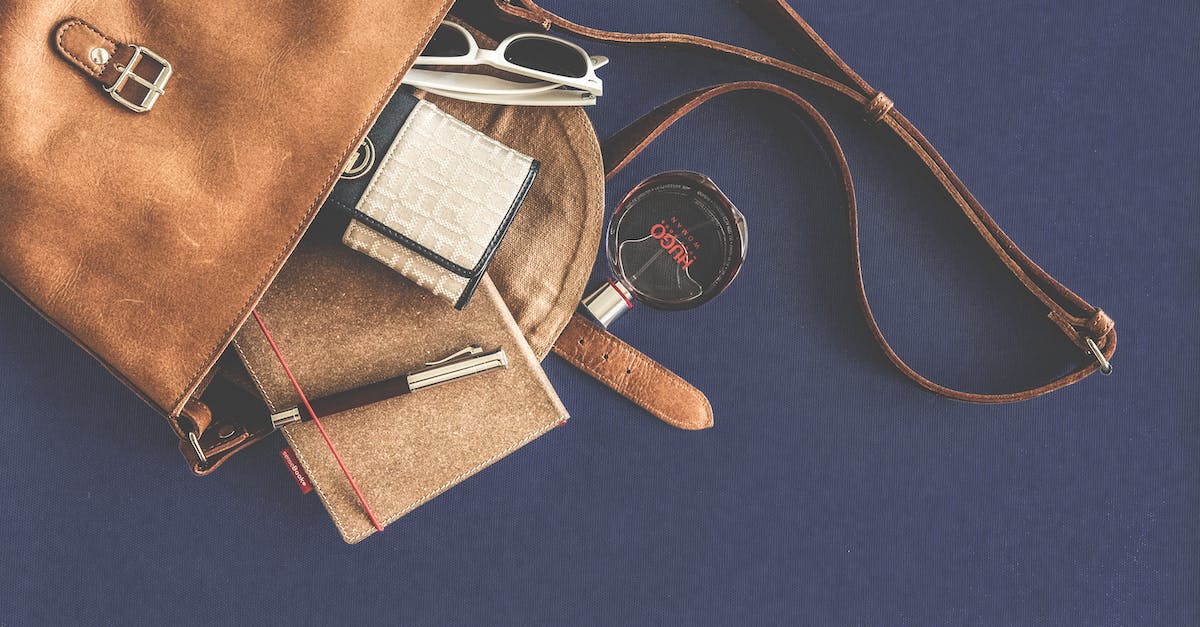You’ve probably found yourself staring at a stunning array of bags, wondering whether you should go for a handbag or a shoulder bag. They may seem similar at first glance, but there’s more to each than meets the eye. Let’s dive into the world of bags and discover what really sets these two favorites apart.

Choosing the right bag is not just about style; it’s about functionality and comfort too. Whether you’re prepping for a day at the office or a casual outing, knowing the difference between a handbag and a shoulder bag can make all the difference in your day-to-day hustle.
Handbag vs Shoulder Bag: What’s the Difference?
Handbags hold a firm spot in fashion and function. Typically, they come with a small or medium-sized strap you carry in your hand or on your arm. Think elegance and structure; these bags often radiate sophistication. Brands design handbags for style first, utility second, making them perfect for special occasions or when you don’t need to carry much.
Shoulder bags, on the other hand, are all about versatility and comfort. Their longer straps allow you to drape the bag over your shoulder, keeping your hands free. They’re more casual and ideal for those times you need to haul around everyday essentials. Whether it’s for a day of shopping or running errands, a shoulder bag’s accessibility makes them a practical choice for most.
Here’s a quick rundown of the key differences:
- Carrying Style: Handbags – in hand or on the arm; Shoulder bags – over the shoulder.
- Capacity: Shoulder bags generally offer more room than handbags.
- Occasion Suitability: Handbags – formal; Shoulder bags – casual to semi-formal.
- Accessibility: Shoulder bags win with ease of access.
Material and weight distribution matter too. Handbags often come in luxurious leathers or sturdy synthetics. They can strain your arm if overpacked, which is why they’re not meant to carry much. Shoulder bags, with their weight spread across your shoulder, promote better posture and aren’t as taxing on the body.
When browsing your options, remember that design plays a significant role. Designers craft handbags to be statement pieces that complement your outfit, while shoulder bags are built to meld function with fashion. In a fast-paced world, having a go-to shoulder bag for daily wear and a chic handbag for events can cover all the bases. Choose according to your lifestyle, considering what you’ll carry, where you’ll go, and which style speaks to you.
Considering these factors will improve your overall experience with either type of bag. After all, the right bag can make or break an outfit, not to mention how it fits into your daily life.
Design and Structure: A Closer Look
When you’re eyeing that perfect accessory, the design and structure of a bag are what make it stand out. Handbags often showcase bold designs, meant to catch the eye and complement high-fashion looks. They often have firm bodies that maintain shape regardless of contents, highlighting the designer’s intent.
- Handbags typically feature:
- Sturdy construction
- Unique shapes
- Smaller compartments
Whereas shoulder bags are built with practicality in mind. They lean towards a slouchy design or have flexible material that adapts to what’s inside. This design choice prioritizes functionality and ease of use. Straps are a focal point—they are broader and longer for shoulder comfort during extended wear.
- Shoulder bags are characterized by:
- Adjustable straps
- Larger main compartments
- Durable materials suitable for daily use
The materials play a crucial role in the design. For handbags, luxury materials like fine leather or exotic skins are common, which not only add to the aesthetic but also to the price tag. Metal accents such as clasps and designer logos add a touch of class and security to the handbag.
Shoulder bags often use materials like canvas, nylon, or heavy-duty polyester. These materials endure regular usage and are generally more cost-effective and easy to maintain. Unlike handbags, shoulder bags incorporate reinforced stitching to handle additional weight and frequent movement.
Interior Organization
Delving inside, handbags might have limited space but they offer organized compartments for essentials like your phone, wallet, and keys. On the flip side, shoulder bags often come with multiple pockets and dividers, making them ideal for carrying larger items such as books, tablets, and even gym clothes.
Storage needs vary widely, and your choice between a handbag or shoulder bag will heavily depend on the items you carry daily. Keep in mind that the more compartments and pockets a bag has, the easier it will be to find your belongings. But remember, elegance or utility—there’s a design out there that’s perfectly aligned with your lifestyle.
Carrying Options: Handheld vs. Crossbody
When you’re navigating the maze of bags, how you carry your chosen companion might just tip the scales. Handheld handbags are often about status and style. They swing from your arm with a certain elegance, communicating a polished look that’s hard to rival. Think of iconic designs like the hard-framed, briefcase-style bag that’s quintessential for power lunches and high-stakes meetings.
Handheld bags typically:
- Exude sophistication
- Limit your mobility
- Demand to be noticed
On the flip side, you’ve got crossbody shoulder bags, the champions of versatility and functionality. They’re slung across your body, leaving your hands blissfully free. If you’re about zipping through city streets or need your phone at the ready, they’re your go-to.
Crossbody bags usually feature:
- Adjustable straps for a custom fit
- Easy access while on the move
- A casual and practical vibe
But it’s not just about comfort. The crossbody bag also makes a statement. It’s a nod to contemporary life where multasking is the norm, and efficiency can’t be compromised. It weaves effortlessly into a busy lifestyle without sacrificing an ounce of style.
« Handbag vs Satchel: Choose Your Perfect Accessory with This Style Guide
How to Protect Gold Hardware on Handbags: Shine On with These Pro Tips »
Material choices for each style play a role in carrying comfort. A leather handheld might weigh down your arm, while a nylon crossbody feels like next to nothing. And let’s not forget the impact on posture – a heavy tote hung on the crook of your arm day in, day out, might not agree with your shoulder as much as a crossbody strap evenly distributing weight across your body.
Ultimately, whether you settle on the classic handheld or swing into the ease of a crossbody, your decision plays into your daily demands, your style credentials, and, let’s be honest, the aspects of practicality you’re willing to negotiate.
Size Matters: Capacity and Organization
When you’re considering a handbag or shoulder bag, storage space and organizational features are crucial. Handbags typically offer a single compartment with perhaps a pocket or two for small items. They’re meant for style and often sacrifice capacity for aesthetics. You’ll find them adequate for essentials: your phone, a compact, and a wallet.
On the other hand, shoulder bags are designed with multi-functional storage in mind. Features like multiple compartments, zippers, and pockets make them ideal for those who carry more than just the basics. They’re excellent for daily use with sections for gadgets, makeup, and even a small umbrella.
- Handheld handbags
- Shoulder bags
The dimensions of each bag also feed into their respective capacities. Here are some average sizes you’ll encounter:
| Bag Type | Width (in) | Height (in) | Depth (in) |
|---|---|---|---|
| Medium Handbag | 12 | 10 | 5 |
| Large Shoulder Bag | 14 | 12 | 7 |
Remember, these are just averages; you’ll find a range of sizes out there. It’s about finding the perfect balance between what you need to carry and how you want to look. Shoulder bags give you the option of a streamlined design or an expansive carrier. In contrast, a handbag might limit you in size but still stand out as a fashion statement.
The material of the bag can affect not just durability, but also how much it can hold without losing shape. Leather bags offer more structure, while canvas styles can expand but might look bulkier when filled. Leather’s rigid form helps maintain the bag’s shape regardless of how full it gets, which is something to consider if you’re leaning towards a sleek look even on busy days.
Style and Occasion: Choosing the Right Bag
When you’re eyeing your closet thinking about the day ahead, your choice between a handbag and shoulder bag isn’t just about storage—it’s about the statement you want to make. Handbags often serve as a centerpiece, a splash of style to elevate your outfit. Imagine holding a chic clutch or a sophisticated tote; these are perfect for formal events or a high-impact office look.
In contrast, shoulder bags skew towards casual and versatile. They’re the sort you’d grab for a day out shopping or when you’re traveling and need your hands free. Their form follows function yet doesn’t skimp on fashion—it’s about balance. With adjustable straps and a more laid-back look, shoulder bags are a go-to for a reason.
Material and color coordination also play into this decision. A sleek leather handbag in a neutral shade is a timeless piece that complements a professional wardrobe. For those sun-soaked summer days, a canvas shoulder bag with a pop of color can match the energy and ease of the season.
Sure, you might prioritize practicality on most days, but don’t underestimate the power of the right accessory for the right occasion. When selecting your bag of the day, consider:
- The day’s itinerary
- The dress code of your events
- Comfort and convenience necessities
- The overall look you’re aiming for
Whether it’s a quick coffee run or a vital business meeting, your bag isn’t just carrying your essentials—it’s carrying your image. Remember that a handbag might restrict your movement but offer elegance, while a shoulder bag ensures freedom with flair. Each has its moment to shine—it’s up to you to decide when that is.
Conclusion
So you’ve got the scoop on handbags and shoulder bags. Remember, it’s all about matching your bag to your needs and style. Whether you’re going for that sleek handbag to complement your power suit or a shoulder bag that’ll carry you through a day of errands, you’re all set to make the perfect choice. Just keep in mind what you’ll be doing, how much you need to carry, and the statement you want to make. Here’s to stepping out with confidence, no matter which bag you sling over your shoulder or grab by the handles!
Frequently Asked Questions
What is the main difference between handbags and shoulder bags?
Handbags typically focus more on aesthetics and may have less capacity, while shoulder bags often offer more space and functionality with multiple compartments and pockets.
Does the material of a bag affect its structure and capacity?
Yes, the material can significantly affect a bag’s structure and capacity. For example, leather bags tend to maintain their shape better even when full, offering more structure.
Are handbags suitable for formal occasions?
Handbags are often chosen for formal events or creating a high-impact office look because of their stylish appearance and ability to serve as a fashion statement.
When are shoulder bags more appropriate to use?
Shoulder bags are ideal for casual outings, such as a day out shopping or activities that require keeping your hands free, due to their versatility and pragmatic design.
How should the day’s itinerary influence the choice between a handbag and a shoulder bag?
Consider your day’s itinerary, including the dress code, comfort, convenience needs, and the overall look you want to achieve to determine whether a handbag or shoulder bag is more appropriate.










